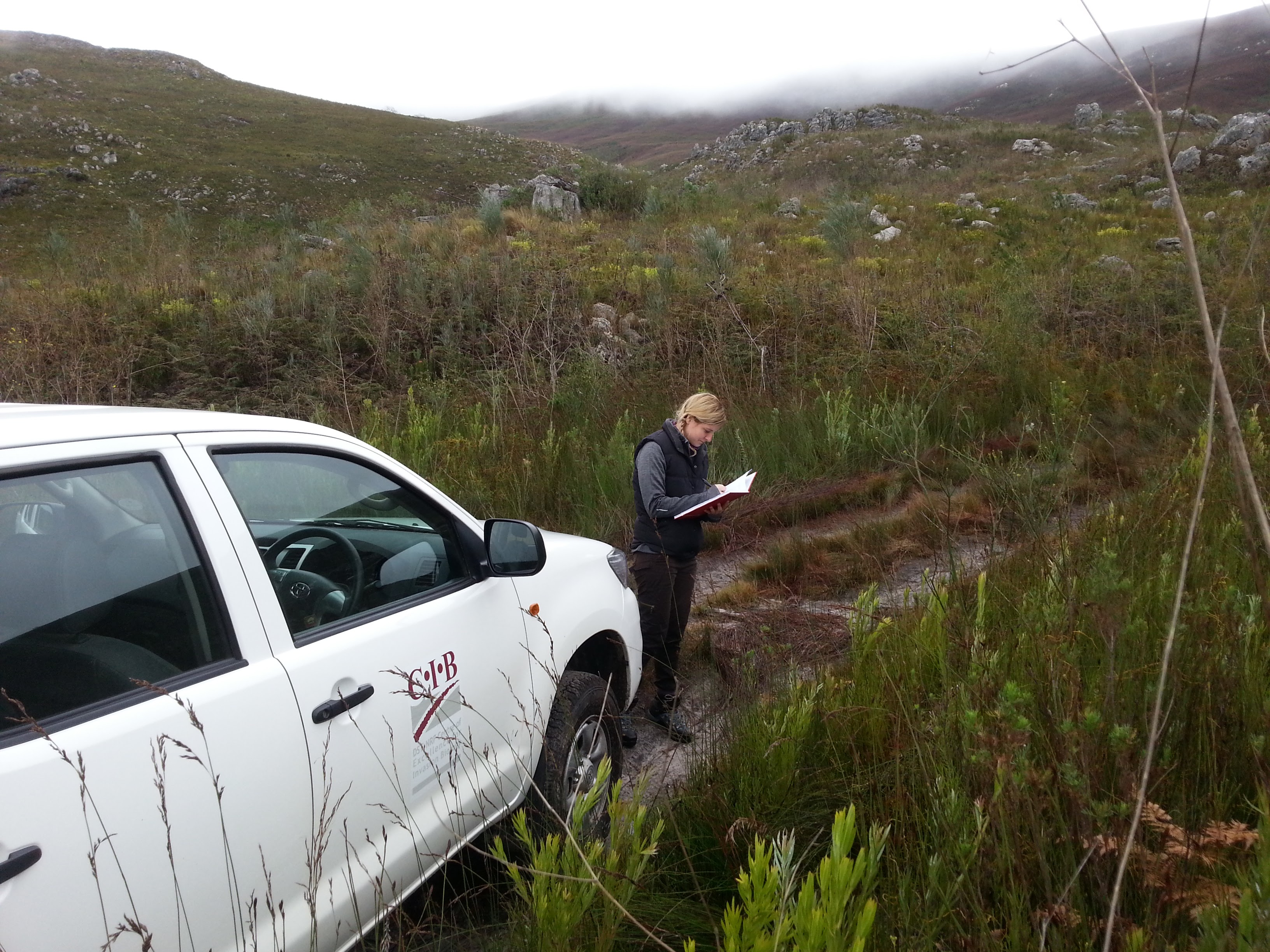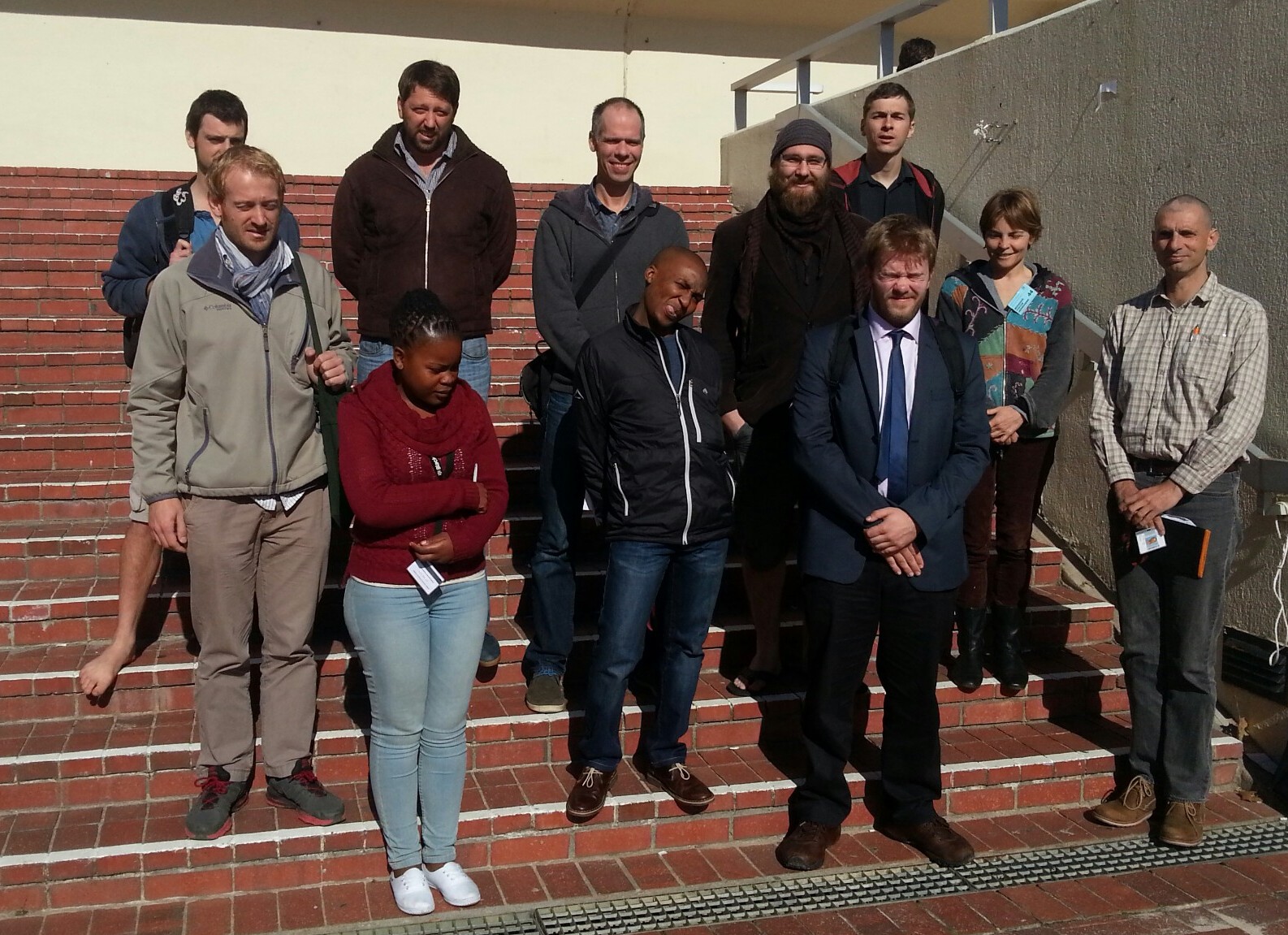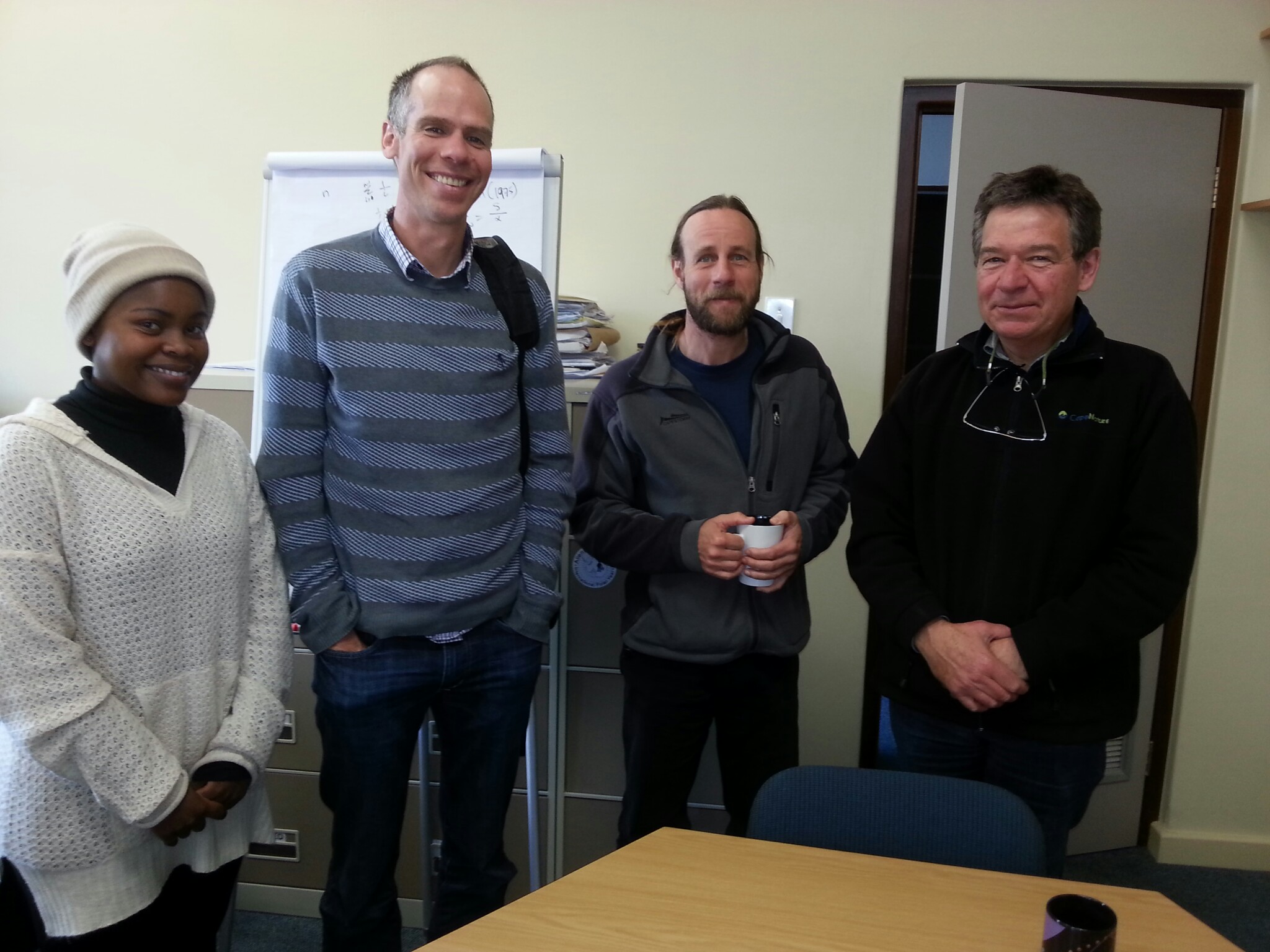Debra Stark, MSc student from the University of Queensland, arrives at the lab to work on acoustic monitoring of Arthroleptella rugosa, a moss frog endemic to the Klein Swartberg.


From back left:
Alex Rebelo, André de Villiers, Ben Evans, Hendé van Rensburg, Corey Thorp
Christoff Trutter, Likho Sikutshwa, Mohlamatsane Mokhatla, Thomas Stielau, Thalassa Matthews, John Measey

From Left:
Charlotte De Busschere; Anthony Herrel; Rui Rebelo; Alain De Vocht; Dennis Roedder; Thierry Backeljau; Sarah Descamps; Ihlow Flora; Jean Secondi; Solveig Vogt; Julien Courant
Held simultaneously in both Lisbon, Portugal, and Stellenbosch, South Africa, via a teleconferencing link, the INVAXEN workshop brought together 22 researchers from Europe, North America and South Africa (including 6 CIB post-graduate students) conducting research on the invasive frog, Xenopus laevis. Delegates discussed issues as diverse as demography, physiology, genetics and ecology of X. laevis in both its native and introduced ranges. CIB fellow, Prof. Ben Evans (McMaster University) gave a talk on his ongoing work with CIB core team member, Dr. John Measey, on genetic introgression between X. laevis and X. gilli in South Africa.
The workshop provided a platform for students in Europe and South Africa to share their complementary findings on the same species that they study in both invasive and native circumstances. Results from the workshop will see pooling of results from both regions in joint publications that detail how this species has adapted to its invaded environment.
The lab welcomes Prof Ben Evans (McMaster University)

Ben meets fellow Xenopus ethusiasts (from left): Likho Sikutshwa, Ben Evans, Andrew Turner & Atherton de Villiers (CapeNature)
Morning session: From fynbos to fields
We start the walk inside the Jonkershoek Nature Reserve (CapeNature) among fynbos vegetation with Brian, John, Karen & Mirijam available to interpret our view of the natural end of the system. The view up the valley contrasts dramatically with the transformed and invaded lower end, where Brian will introduce a classic conflict species in invasion biology: the pine tree. From there, we’ll walk along the river where Karen & Dave have studied the role of riverside vegetation in the invasion process. Next up, the trout hatchery where John & Brian will tell you tales of trout and platannas. The walk then loops around the river and road with plenty of examples of invasive species to provide inspiration and conversation.
Afternoon session: From vines to vagrants
After lunch we’ll start the walk again outside Lanzerac Estate next to vineyards which are watered by the Eerste. Sarah paints the picture of a dam invader which has hopped from far and near. Very quickly the river enters into a peri-urban area where Dave and Vernon will give you insights into the invasive processes that are linked to urban areas. As the walk progresses fields give way to gardens and the noise from the traffic grows.